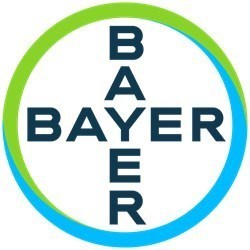RESEARCH TRIANGLE PARK, N.C., Nov. 28, 2016 /PRNewswire/ -- A major new ecotoxicological review and risk assessment has been published in the peer-reviewed literature and concluded that registered crop and non-crop uses of imidacloprid in the United States are of minimal risk to sensitive aquatic invertebrate communities. This is also good news for other wildlife, such as birds and fish, since these insects are an important part of their diet.
The neonicotinoid imidacloprid is one of the most widely-used insecticides in the world because of its effectiveness and its relatively favorable human and environmental safety profile. Because aquatic invertebrates serve an important function in nature, many studies have been performed to characterize the potential impact across a variety of species. The publication details the body of research, the careful selection and use of the best available data, and the probabilistic risk assessment. The probabilistic approach better predicts the effects to sensitive species, the relevant exposures and the potential risks to aquatic invertebrate communities in terms of the actual label use directions and the natural environment for these crops and treated landscapes.
The researchers1 found that higher-tier studies provide the most robust data for regulatory decision making. "Laboratory testing is necessary to establish toxicity endpoints for a wide range of organisms, however such studies have unrealistic exposure conditions which often lead to overestimated toxicity. Fortunately, we had data from many higher-tier mesocosm studies for imidacloprid, which is almost unprecedented," said Dr. Dwayne Moore, Senior VP and Scientist at Intrinsik Environmental Sciences (US) Corp., one of the researchers involved in the review. "The higher tier studies enabled us to look at aquatic invertebrate communities containing a wide array of invertebrate species in realistic environmental settings, which is far more predictive of the biological realities of aquatic ecosystems than are tests on single species in artificial environments in the laboratory."
In the assessment, refined exposure models that better represent pest treatments and the environments where applications could be made were used. The researchers found that their aquatic exposure predictions were consistent with a decade of water sampling data available from public sources, including the U.S. Geological Survey. "We conducted 30-year simulations based on realistic, but conservative, assumptions and found that aquatic communities are unlikely to be at risk from acute or chronic exposures to registered uses of imidacloprid," noted Dr. Moore. "In fact, risks were de minimis, the lowest possible category, for all crop and non-crop uses."
1Researcher Affiliations
Intrinsik Environmental Sciences Corp., Mississauga, ON, Canada
Stone Environmental Inc., Montpelier, VT, USA
Bayer CropScience, Research Triangle Park, NC, USA
Intrinsik Environmental Sciences Corp. (US), New Gloucester, ME, USA
Stantec Consulting Ltd, Stoney Creek, ON, Canada
Bayer is committed to bringing new technology and solutions for agriculture and non-agricultural uses. For questions concerning the availability and use of products, contact a local Bayer representative, or visit Crop Science, a division of Bayer, online at www.cropscience.bayer.us.
Visit the Bayer Connect - Social Hub for social media, recent news, blog posts, videos and more from Crop Science, a division of Bayer.
Bayer: Science For A Better Life
Bayer is a global enterprise with core competencies in the Life Science fields of health care and agriculture. Its products and services are designed to benefit people and improve their quality of life. At the same time, the Group aims to create value through innovation, growth and high earning power. Bayer is committed to the principles of sustainable development and to its social and ethical responsibilities as a corporate citizen. In fiscal 2015, the Group employed around 117,000 people and had sales of EUR 46.3 billion. Capital expenditures amounted to EUR 2.6 billion, R&D expenses to EUR 4.3 billion. These figures include those for the high-tech polymers business, which was floated on the stock market as an independent company named Covestro on October 6, 2015. For more information, go to www.bayer.com.
Find more information at www.cropscience.bayer.us.
Forward-Looking Statements
This release may contain forward-looking statements based on current assumptions and forecasts made by Bayer Group or subgroup management. Various known and unknown risks, uncertainties and other factors could lead to material differences between the actual future results, financial situation, development or performance of the company and the estimates given here. These factors include those discussed in Bayer's public reports which are available on the Bayer website at www.bayer.com. The company assumes no liability whatsoever to update these forward-looking statements or to conform them to future events or developments.
Logo - http://photos.prnewswire.com/prnh/20140312/NY79226LOGO
SOURCE Bayer
Related Links
WANT YOUR COMPANY'S NEWS FEATURED ON PRNEWSWIRE.COM?
Newsrooms &
Influencers
Digital Media
Outlets
Journalists
Opted In





Share this article